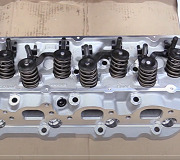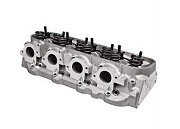Introduction
Coolant mixing with engine oil is a sign of a serious problem, often caused by a blown head gasket, or a failed engine oil cooler. When these components fail, they allow coolant to leak into the oil pan or combustion chamber, leading to oil contamination and potential engine damage.
First Signs
1. During routine maintenance, you might observe that the coolant level in the reservoir is low, even though there are no visible coolant leaks under your car. This can mean the cooling is leaking inside the engine, at this point you should remove the oil cap to check for milky goo, or chocolate milk as some call it which is a milky white, or yellow colored oil sludge. You can also use a flashlight to look inside the valve cover to further your inspection.
2. You will see white smoke or steam produced from the exhaust system tail pipe while the engine is running which has a sweet pungent odor.
3. The engine will overheat while the radiator cooling fans are on full power.
3. A check engine light has come on informing you of a cylinder misfire.
This can be caused by any of the following problems:
- Blown head gasket
- Failed engine oil cooler
- Cracked engine block
- Cracked cylinder head
- Failed timing chain cover or gasket
- Water pump leakage (internal pump location)
- Intake manifold gasket failure (V6 and V8 only)
There is really no other way coolant can get inside the engine unless some pours coolant inside the engine by mistake.
Narrow Down the Problem
1. To help troubleshoot this kind of problem it is best to remove the spark plugs to see if any look different, typically if coolant is leaking into the combustion chamber one of the spark plugs will be steam cleaned. Also, a bore scope can be used to see if the top of the piston has been steam cleaned, a sure sign of one of the three:
- Blown head gasket
- Cracked engine block
- Cracked cylinder head
In this case the engine will need to be disassembled and inspected for the blown head gasket, and if the gasket is okay the cylinder head will need to be checked by an automotive machine shop, and the last option is not pretty.
2. If there are no signs the head gasket is leaking, some exploratory surgery is necessary. I like to remove the oil cooler and leave the coolant lines connected, then pressurize the cooling system to see if coolant drips from the cooler which will warrant replacement.
3. If the oil cooler is okay or your car's engine doesn't not use a cooler, it is time to start removing parts until the failed gasket or seal has been found. If the engine design uses a internal water pump, (timing chain driven) I would start there, and then move onto the timing chain cover and intake manifold gasket, (V6 and V8 engines only).
Pro Tip
If your car is not used on a regular basis there could be a very slight amount of milky oil on the oil fill cap due to condensation which is normal, once the engine heats up the moisture will evaporate.
Prevention
Changing the coolant inside the cooling system and radiator will help keep the coolant from turning acidic which will help protect the head gasket, oil cooler as well as internal engine parts. Coolant can become chemically unbalanced which will eat at the internal engine parts if the coolant is not replaced.
Conclusion
After repairs have been performed allow the engine oil to drain out fully, also remove the oil filter and replace it with a new one. Once the engine is running, allow it to idle and heat up which will help remove any remaining moisture before driving.
Credits
This guide knowledge base was created by the 2CarPros Team, and by Ken Lavacot: Automobile repair shop owner and certified master automobile technician of over 30 years. If you have question or need help please ask one of our experts we are happy to help. Please visit our 2CarPros YouTube Channel.






